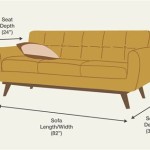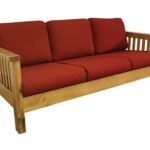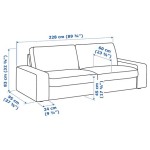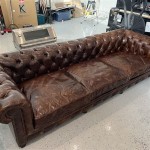```html
The Enduring Appeal of the Bauhaus Sofa Chair
The Bauhaus sofa chair represents a significant intersection of art, design, and industrial principles. Emerging from the Bauhaus school in Germany during the early 20th century, these chairs are not merely seating; they are physical manifestations of the movement's core tenets: functionality, simplicity, and the integration of art with craftsmanship. Understanding the historical context, design characteristics, and continuing relevance of the Bauhaus sofa chair provides valuable insight into modern furniture design and its philosophical underpinnings.
The Bauhaus school, founded by Walter Gropius in 1919, aimed to bridge the gap between art and industry. It sought to create practical, aesthetically pleasing objects accessible to a wider audience. This objective was a direct response to the prevailing ornate and often impractical designs of the late 19th and early 20th centuries. The Bauhaus approach emphasized clean lines, geometric forms, and the use of modern materials like tubular steel, reflecting a rejection of historical ornamentation in favor of functional efficiency.
The impact of the Bauhaus movement extended beyond furniture design, influencing architecture, graphic design, typography, and other creative fields. The principles of minimalism, rationalism, and the unity of art, craft, and technology became hallmarks of a new design aesthetic. The Bauhaus, despite its relatively short lifespan before being shut down by the Nazi regime in 1933, left an indelible mark on the design world, shaping many of the aesthetic preferences and manufacturing processes we see today.
Bauhaus chairs and sofas were designed with a clear focus on form following function. This meant that every design element served a specific purpose, contributing to the overall comfort, stability, and visual appeal of the piece. Extraneous ornamentation was eliminated, resulting in furniture that was both aesthetically pleasing and highly functional. The use of industrial materials and manufacturing processes also allowed for the production of furniture at a more accessible price point, furthering the Bauhaus ideal of making good design available to a wider audience.
Key Features of Bauhaus Sofa Chair Design
Bauhaus sofa chair design is characterized by several distinctive features that set it apart from other furniture styles. These features reflect the movement's core principles and its emphasis on functionality, simplicity, and the use of modern materials.
One of the most recognizable features is the use of tubular steel frames. This material offered strength, durability, and a sleek, modern aesthetic. The seamless, flowing lines of the steel frames contrasted sharply with the heavy, ornate wooden frames of traditional furniture. The technique of bending steel tubing allowed for the creation of unique and visually striking forms, as exemplified in the iconic cantilevered chairs designed by Marcel Breuer.
Another defining characteristic is the emphasis on geometric shapes. Bauhaus designers favored squares, rectangles, circles, and triangles, incorporating these basic forms into the overall design of their furniture. This geometric approach contributed to the clean, uncluttered aesthetic that is synonymous with the Bauhaus style. The use of geometric shapes also allowed for efficient manufacturing and assembly, reflecting the Bauhaus commitment to integrating art and industry.
Minimalism is central to the Bauhaus sofa chair. Design elements are reduced to their bare essentials, stripping away any unnecessary ornamentation. This emphasis on minimalism not only contributes to the aesthetic appeal of the furniture but also enhances its functionality. The absence of extraneous details makes the furniture easier to clean, maintain, and adapt to a variety of interior spaces. The upholstery is typically simple and unadorned, using durable and practical fabrics such as leather, canvas, or woven textiles in neutral colors.
Influential Bauhaus Sofa Chair Designers
Several prominent designers contributed to the development and popularization of the Bauhaus sofa chair. Their innovative approaches to design and their commitment to the Bauhaus principles have had a lasting impact on the furniture industry.
Marcel Breuer is perhaps best known for his cantilevered chairs, which revolutionized furniture design with their innovative use of tubular steel. His Wassily Chair, designed in 1925-1926, is considered an icon of the Bauhaus movement. It features a sleek, minimalist frame constructed from bent tubular steel and upholstered with leather or canvas. Breuer's designs reflected his belief that furniture should be functional, comfortable, and aesthetically pleasing, embodying the core tenets of the Bauhaus philosophy.
Ludwig Mies van der Rohe, another influential figure in the Bauhaus movement, designed the Barcelona Chair in 1929 for the International Exposition in Barcelona, Spain. This chair is characterized by its elegant simplicity and its use of high-quality materials. The frame is made of polished stainless steel, and the seat and back are upholstered with leather tufted into individual squares. The Barcelona Chair is a testament to Mies van der Rohe's belief that "less is more," and it remains a popular and highly sought-after piece of furniture today.
Although less directly associated with sofa chair design, Walter Gropius, as the founder of the Bauhaus school, played a crucial role in shaping the design philosophy that informed the creation of these pieces. His emphasis on the unity of art, craft, and technology, and his commitment to making good design accessible to a wider audience, had profound influence on the work of Breuer, Mies van der Rohe, and other Bauhaus designers.
The Continuing Relevance of the Bauhaus Sofa Chair
Despite being designed nearly a century ago, the Bauhaus sofa chair continues to be relevant and influential in the world of furniture design. Its timeless aesthetic, functional design, and durable construction ensure that it remains a popular choice for both residential and commercial spaces.
The minimalist aesthetic of the Bauhaus sofa chair aligns perfectly with contemporary design trends that favor clean lines, simple forms, and uncluttered spaces. Its ability to blend seamlessly with a variety of interior styles, from modern and minimalist to industrial and eclectic, makes it a versatile choice for homeowners and interior designers alike. The enduring appeal of the Bauhaus sofa chair is a testament to the timelessness of good design.
The principles of functionality and efficiency that guided the Bauhaus movement are more relevant than ever in today's world. As consumers become increasingly conscious of the environmental impact of their purchasing decisions, the durability and longevity of the Bauhaus sofa chair make it an appealing alternative to disposable, mass-produced furniture. Its focus on simple, enduring design ensures that it will remain a functional and aesthetically pleasing piece for many years to come.
The Bauhaus sofa chair serves as a constant reminder of the importance of integrating art and industry. Its creation was based on the idea that beautiful designs can be functional and accessible and that good design can improve the quality of life for everyone. This legacy continues to inspire designers today to create innovative, sustainable, and aesthetically pleasing products that meet the needs of a changing world. The Bauhaus movement's influence can be seen in numerous aspects of modern design, from architecture and graphic design to product design and interior design. The Bauhaus sofa chair is a tangible representation of this influence, and its enduring popularity ensures that the principles of the Bauhaus movement will continue to resonate for generations to come.
```
Bauhaus Sofa In Leather Tubular Steel 1930s For At Pamono

Bauhaus Furniture Bexley Linen Swivel Chair

Mr Lounge Chair Bauhaus Edition Knoll International By Ludwig Mies Van Der Rohe 1929 Originals From Smow

Bauhaus Red Sofa In Chrome Plated Steel High Quality Leather Attributed To Robert Slezák Czech 1930s For At Pamono

Florence Knoll Lounge Chair

Hill Designer Chair Single Sofa Small Apartment Leisure Nordic Bauhaus Retro

Vintage Bauhaus Tubular Metal Leather Sofa 1950s

Carlton Lounge Chair By Giovannetti

Hill Designer Chair Single Sofa Small Apartment Leisure Nordic Bauhaus Retro

Bauhaus Sofa In Chrome Plated Steel And Red Leather Attributed To Robert Slezák Former Czechoslovakia 1950s Chairish
Related Posts








